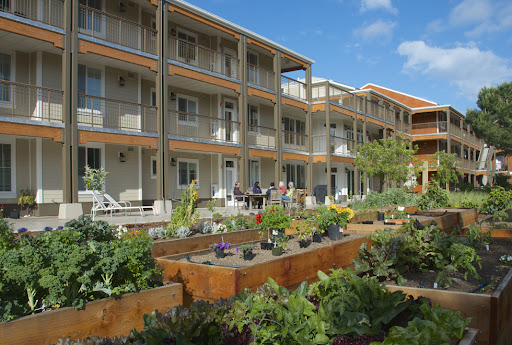
A Co-Housing Community
Introduction
The dream of homeownership has long been ingrained in the cultural fabric of societies worldwide. However, traditional paths to owning a home, such as securing a mortgage, can be challenging for many individuals due to financial constraints, credit history, or other barriers. In recent years, there has been a growing interest in exploring alternative paths to homeownership that offer creative solutions to make this dream a reality for a more diverse range of people. In this article, we will delve into three alternative paths to homeownership that are gaining traction in the real estate landscape.
- Rent-to-Own Programs: Bridging the Gap
Rent-to-own programs provide a unique and flexible pathway to homeownership, particularly for individuals who may not have the immediate financial means or stellar credit required for a traditional mortgage. These programs typically work by allowing tenants to rent a property with the option to buy it after a certain period, usually three to five years.
During the rental period, a portion of the monthly rent is set aside as a potential down payment on the property. This accumulation of funds serves as a gradual entry into homeownership, providing tenants with the opportunity to build equity over time. Additionally, rent-to-own agreements often lock in the purchase price at the beginning of the lease, offering a hedge against potential increases in the property’s value.
One of the key advantages of rent-to-own programs is the flexibility they afford prospective homeowners. It allows individuals to live in and test out a property before committing to the purchase. This trial period enables them to assess whether the home meets their long-term needs and whether they can envision themselves as homeowners in that community.
Moreover, rent-to-own arrangements can be structured to cater to the unique financial situations of aspiring homeowners. For those with less-than-perfect credit scores, this alternative path offers an opportunity to rebuild credit while working towards homeownership. As a result, rent-to-own programs empower a broader spectrum of individuals to take steps toward owning a home without the immediate pressure of securing a traditional mortgage.
- Community Land Trusts: Shared Stewardship for Affordable Housing
Community Land Trusts (CLTs) are nonprofit organizations that acquire and hold land for the benefit of the community. In the context of homeownership, CLTs create a unique model where the land is owned collectively, while individual homeowners own the structures on the land. This shared stewardship model aims to ensure long-term affordability, prevent speculation, and promote community-driven development.
In a CLT, prospective homeowners purchase the building on the land while entering into a long-term ground lease for the land itself. The lease typically includes conditions that maintain affordability, such as restrictions on the resale price and requirements for owner-occupancy. This innovative approach not only makes homeownership more accessible but also contributes to the preservation of affordable housing options within communities.
One of the primary benefits of CLTs is their commitment to community-driven decision-making. The structure empowers residents to actively participate in the governance and decision-making processes of the trust, ensuring that the community’s needs and priorities are considered. This collaborative approach fosters a sense of shared responsibility and belonging, creating a unique form of homeownership that extends beyond individual property lines.
Furthermore, CLTs often partner with local governments, nonprofits, and developers to create mixed-income housing developments, promoting economic diversity within neighborhoods. By fostering inclusive and sustainable communities, CLTs contribute to the long-term stability and vitality of the areas they serve.
- Co-Housing Communities: Sharing Space, Sharing Ownership
Co-housing communities represent another alternative path to homeownership, emphasizing the power of communal living and shared resources. In a co-housing arrangement, individuals or families come together to create intentional communities where each household has its private living space, but shared common areas foster a sense of community and collaboration.
In terms of homeownership, co-housing communities often operate on a cooperative model where residents collectively own the entire property. This can include shared amenities such as gardens, communal kitchens, and recreational spaces. Residents contribute financially to the maintenance and management of the community, making homeownership more attainable through shared responsibilities and reduced individual costs.
The benefits of co-housing extend beyond financial considerations. Residents often experience a strong sense of community, mutual support, and shared values. This alternative path to homeownership not only addresses housing affordability but also provides a social framework that enriches the lives of those involved.
Co-housing communities are particularly appealing to individuals who value collaboration and a sense of belonging. They offer an alternative lifestyle that goes beyond the traditional concept of homeownership, emphasizing the importance of community bonds and sustainable living practices. As urbanization continues and the cost of living rises, co-housing provides a counter-narrative, demonstrating that homeownership can be achieved through cooperation and shared commitment.
Conclusion
Exploring alternative paths to homeownership is essential for creating a more inclusive and accessible housing market. Rent-to-own programs, Community Land Trusts, and co-housing communities represent just a few innovative approaches that challenge the conventional norms of real estate. By diversifying the options available, these alternatives open doors for individuals facing various financial, credit, and societal barriers to achieve the dream of homeownership.
As the real estate landscape continues to evolve, it is crucial for policymakers, developers, and communities to collaborate and explore creative solutions. The pursuit of alternative paths to homeownership not only addresses the immediate needs of aspiring homeowners but also contributes to the overall resilience and sustainability of our communities. By embracing these alternative models, we move closer to a future where homeownership is truly attainable for a diverse and vibrant spectrum of individuals and families.

A Co-Housing Community
 Facebook
Facebook
 X
X
 Pinterest
Pinterest
 Copy Link
Copy Link